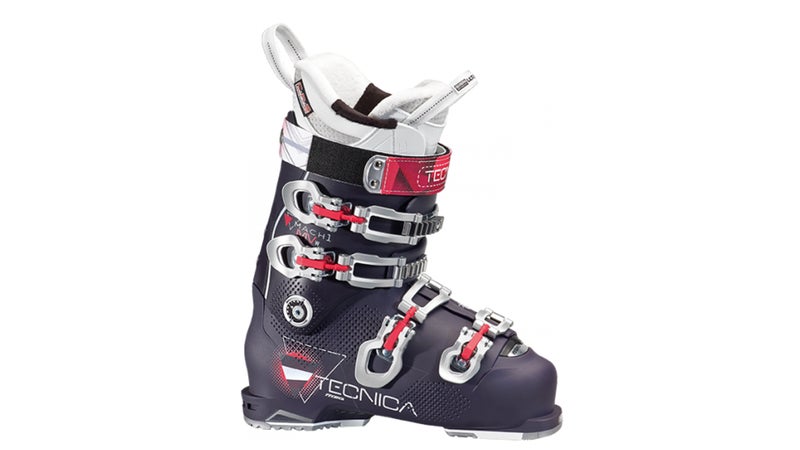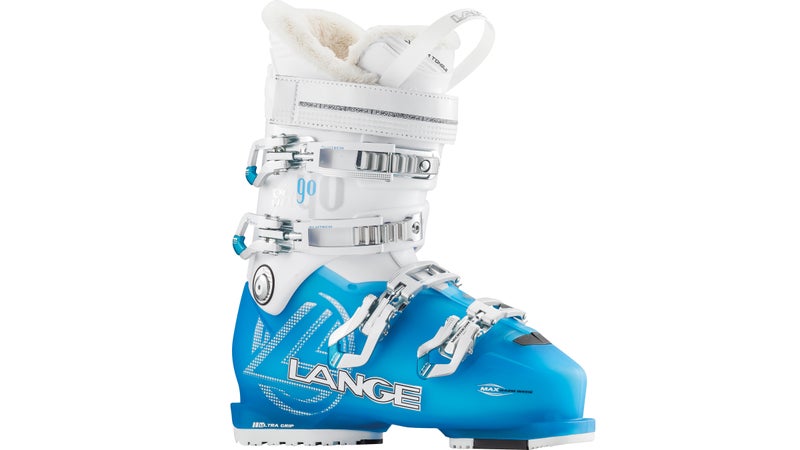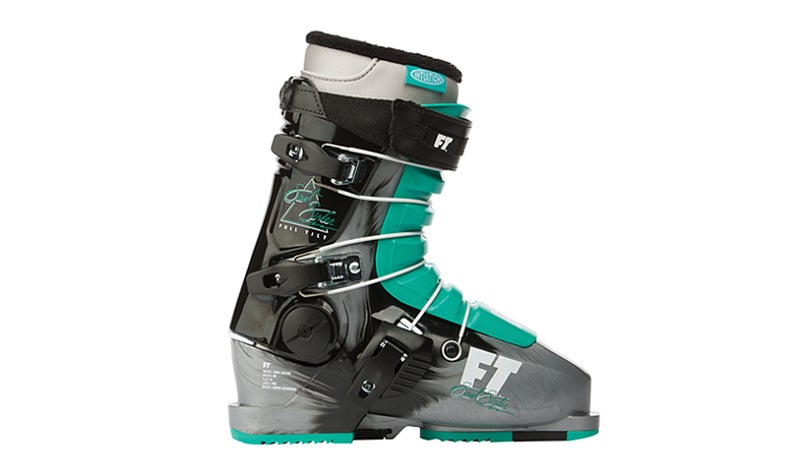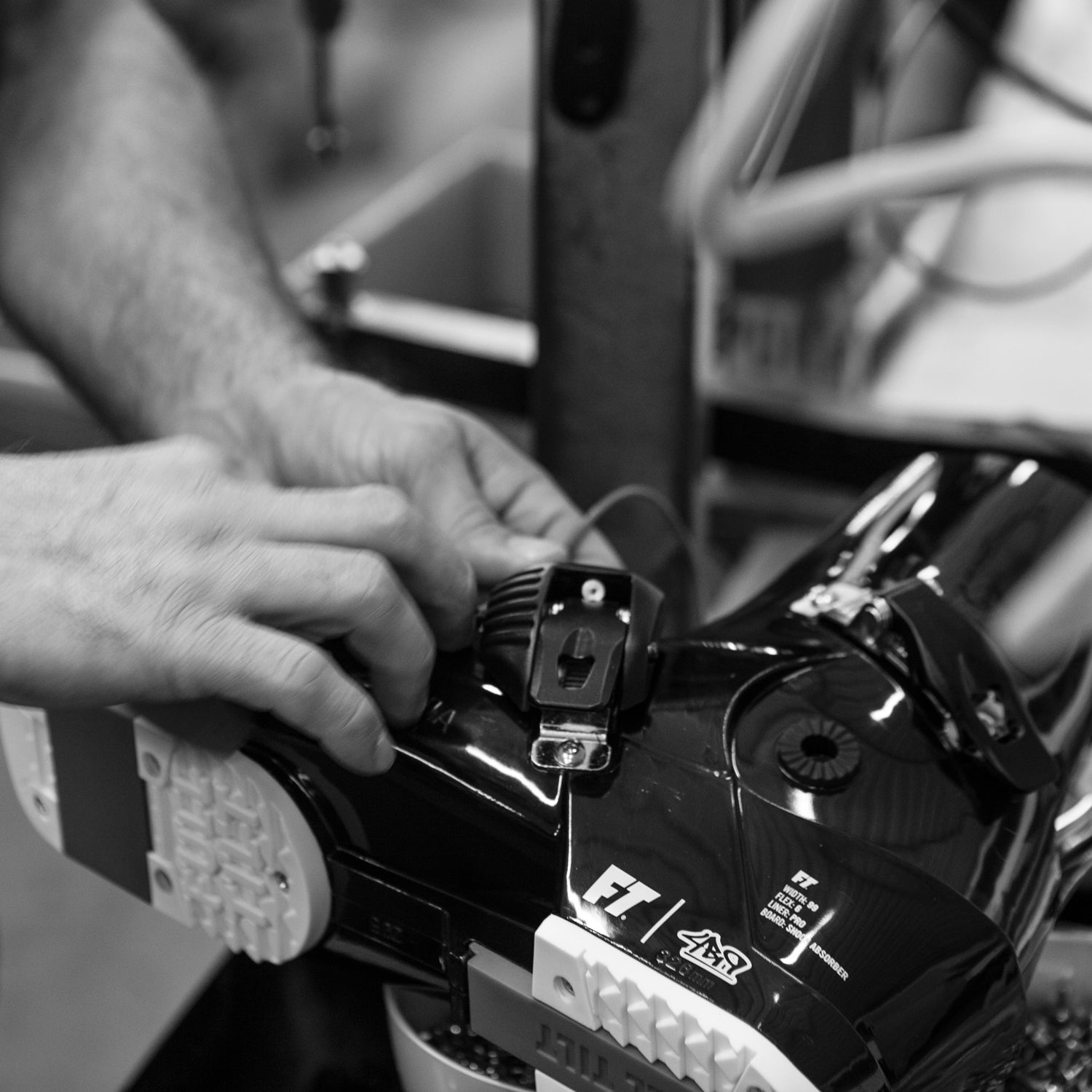If a poodle-fur lining was the only thing women needed from a ski boot, we would’ve found our Shangri-la years ago. Because for decades, the only thing that distinguished women’s boots from the men’s was snuggly, cuddle-toy trim. Yes, women want warm feet, but we also want superior fit and performance, and a few companies have started to invest real effort into women’s designs.
It took a while, because ski boots (particularly the shells) are outrageously expensive to produce. “It costs $1.5 million per size run to develop each model,” says Thor Verdonk, director of Alpine Product for all Rossignol brands, including Lange. Companies have therefore tried to be as efficient as possible about what they made. Pinking a man’s boot and marketing it to women saved piles of dollars.
Recently, though, some brands have realized they can make more money by catering to female buyers. An iconic women’s ski, Blizzard’s Black Pearl, became the top-selling ski—including men's models—among specialty retailers last year. “That shows there’s a large women’s market out there,” says Leslie Baker-Brown, the U.S. marketing manager for Blizzard and Tecnica, which recently doubled down on the brand's women’s initiatives.
In late 2015, the sister brands hired Mariaelena Rizzieri—an Italian ski racer who studied finance at the University of Denver—to oversee the new , which challenged in-house designers to take a hard look at women’s anatomical differences and re-tool their skis and boots accordingly. Meanwhile, focus groups and outreach efforts in Portillo, Chile, and Park City, Utah, have solicited input from core skiers. “The company committed to not only designing better women’s products, but to figuring out how to speak to women in ways that resonate,” says Baker-Brown. “Women don’t need propping up. There’s a fine line between speaking down to women and empowering them with information and education.”
After digesting women’s input and consulting with some of the country’s top bootfitters, Tecnica developed several new women’s models for its 2017/18 Mach line of ski boots, including two 115-flex models—stiffer than almost any women's non-race boot on the market. Warmth remains a top priority among women, so Tecnica integrated a new mineral-based material that “throws heat back to your foot,” says Baker-Brown.
The new boots also take a fresh approach to accommodating women’s calves. At least a decade ago, some ski boot companies started to respond to the fact that women have bulkier calf muscles that attach to tendons lower down on the leg. Ski boots began to feature lower cuff heights and removable rear panels that accommodated such differences. “But we were still seeing that women’s larger calves were preventing their heels from really getting grounded on the footbed,” says Baker-Brown. Tecnica’s forthcoming boots address this problem with a new calf-adapter system. And they’ll continue to offer the heel-gripping fit that makes current models so successful. (Most women have a V-shaped foot that’s broad across the toes but narrow at the heel.)
Such changes don’t just pamper women or appeal to them with girly-looking embellishments: they actually improve the foot’s interface with the boot, which lets women transfer greater power and control to their skis. Here are three of the best around this season.
Tecnica Mach1 105 W ($720)

Knowing that many—but not all—women have narrow, low-volume feet, Tecnica makes its high-performance Alpine boot in two versions: a with a 98mm last and a with a 100mm last. Both feature an anatomically-shaped, women’s-specific heel cup in the liner and shell that hugs the Achilles tendon and keeps your foot from sloshing around in the boot—and both apply impressive power to your skis’ edges.
Lange SX 90 W ($550)

For years, Lange has specialized in building low-volume ski boots that appeal to racers (who like the power transfer they get from a more compressive fit) and narrow-footed women of all abilities (the company makes an in a narrow, 97mm last). “Not all women are racers,” says Verdonk. But most women do have lower-volume feet than men. After investing in 3-D imaging that has captured more than 10,000 kickers, Lange found that women’s feet were, on average, narrower overall—and particularly at the heel. So its boots fit snugly there, and this winter, Lange started making low-volume boots for wider feet: the measures 102mm across the forefoot, but still provides the foot-hugging fit that experts prefer. It also uses a more upright stance (Lange’s women’s boots average 12-degree forward lean, whereas 14 to 18 degrees is more typical across the industry). “With today’s shaped and rockered skis, it’s less useful to have boots with aggressive ramp angles and forward lean,” says Verdonk. That’s true even for women. “For years, the trend was to put heel lifts in women’s boots to move their mass forward and raise the calf muscles in the cuff,” he explains. But the SX 90 (and Lange’s other women’s boots) use a lower cuff and liner that accommodates women’s calves and eliminates the need for extra ramping.
Full Tilt Soul Sister ($700)

Narrow but progressive (its unique tongue and buckles allow for a smooth, forgiving flex that prevents shin bang), the has become a cult favorite among slender-footed gals who frequent the terrain park. “Ninety percent of today’s pro aerialists, mogul skiers, and slopestyle competitors wear Full Tilt,” says global brand director Josh Malczyk. Like the men’s Original, the Soul Sister uses a narrow, 99mm last, but accommodates women’s broader forefeet with a wider toebox that doesn’t cramp the pinky toe. The cuff is also U-shaped in the back to fit women’s lower, bulkier calves. Bumpers and jumpers with wider feet can try the new , which uses a 102mm last.


